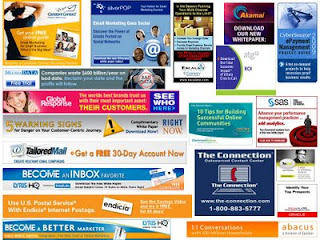Profit
Here's a quiz question to offer to your staff on this first Monday of December:
"You spend $1,000 on a paid search campaign. 3,000 users click through to your site, with 1% converting to a purchase. Customers spend a total of $3,000. 30% of the sales flow-through to profit. Was the paid search campaign profitable?"
Profit is missing from the language of marketing.
I reviewed the language of the twenty-five most popular marketing bloggers. During the life of the blogs on the list, the average marketing leader mentioned the word "profitable" in a median of just six blog posts ever, "profit" in a median of just thirty blog posts ever (and that includes the phrase "non-profit", and includes press releases about corporate profit). In fact, fifteen of the twenty-five bloggers used the phrase "profitable" three or fewer times ever --- and that's across an average of 250 to 1,000 posts.
These are your favorite marketing experts. The majority seldom if ever talk about profit.
Profit becomes part of the DNA of a business. It has been my experience that profit knowledge is kept in small tribes.
- Business Intelligence. BI employees are great at creating and querying cubes. Too often, the components of profit are not contained in the cubes.
- SAS Programmers. A completely different family of employees than BI experts. These crafty workers revel in writing neat code more than they focus on measuring profit. Of all employees, this is the one place where everything could be brought together.
- Web Analytics. This KPI-enamored throng of earnest employees use software that can, but frequently doesn't integrate profit components. So we've created an entire generation of good analysts who do not have profit as part of their DNA.
- E-Mail Analytics. Our e-mail community thinks about return on investment, and that is good! Because e-mail is almost free on a variable cost basis, there hasn't ever been a need to teach profitability. E-mail is always profitable.
- Catalog Circulation. These folks measure profit down to the penny, and for good reason. When you spend $0.75 sending out catalogs, your finance team requires that you become excellent at calculating profit.
- Paid Search. Another group that is really good at measuring profit, and for good reason. When you spend $0.75 per click, your finance team requires that you become excellent at calculating profit.
- Portal Advertising. This group can measure profit, but requires really good systems in order to build this discipline.
- Affiliate Marketing. Since you pay a commission, this style of marketing is generally profitable, and as a result, profit isn't always measured.
- Social Media. By and large, these folks do want to measure influence.
- Brand Marketing. By and large, these folks do want to measure influence.
So why couldn't you be the profit expert? Sit down with your finance team, learn each piece of the profit and loss statement, and start measuring profit!
Labels: Profit




















